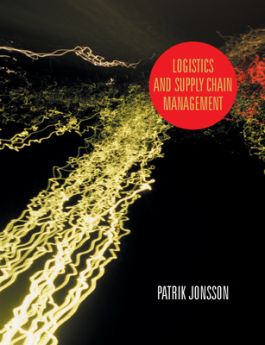Logistics and Supply Chain Management
Receive via shipping:
- Colour, print bound version of the complete text
Chapter One: Introduction to Logistics and Supply Chain Management
Chapter Two: The Logistics System
Chapter Three: The Material Flow
Part Two: Logistics and Supply Chain Goals and Performance
Chapter Four: Customer Service
Chapter Five: Logistics Costs and Tied-Up Capital
Chapter Six: Environmental Aspects of Logistics
Part Three: Logistics and Supply Chain Structures
Chapter Seven: Products in the Logistics System
Chapter Eight: Material Supply Structures
Chapter Nine: Production Processes and Layouts
Chapter Ten: Distribution Structures
Part Four: Planning and Control of Logistics and Supply Chain Systems
Chapter Eleven: Demand Management
Chapter Twelve: Materials Management
Chapter Thirteen: Manufacturing Planning and Control
Chapter Fourteen: Transport Planning
Chapter Fifteen: The Procurement Process
Part Five: Supply Chain, IT and Improvement Aspects of Logistics
Chapter Sixteen: Emerging Practices in Supply Chain Management
Chapter Seventeen: Information Systems for Logistics and Supply Chain Management
Appendices
Appendix A: ABC Analysis
Appendix B: Incremental Inventory Carrying Costs
Appendix C: Derivation of the formula for economic order quantity (EOQ)
Appendix D: Normal Distribution Function
Appendix E: Service Loss Function
Appendix F: Exercises: Solutions to Problems
It also includes coverage of information technology, the impact of manufacturing and product structures on logistics and supply chain systems, and the environment.
Designed specifically with the student in mind, this book is the perfect companion for introductory courses in logistics and supply chain management.
Key Features:
The book contains many mini cases to illustrate current practice.Discussion tasks have been included to help facilitate effective learning and provide reinforcement.
A comprehensive glossary has been included at the end of the book.
Key terms are defined at the end of each chapter.
Where appropriate, quantitative examples and exercises have been included to help students understand planning and control concepts and analysis tools. Full solutions are provided in the appendix.

